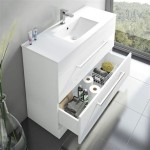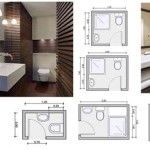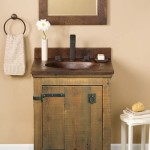Bathroom Floor Plans with Walk-In Showers: A Guide to Design and Functionality
The bathroom is a space where relaxation and personal hygiene intersect. As lifestyles evolve, so do bathroom design preferences. One trend gaining increasing popularity is the walk-in shower, offering accessibility and a modern aesthetic. This article delves into the planning and design considerations for bathroom floor plans featuring walk-in showers, providing insights for both homeowners and professionals.
Understanding the Benefits of Walk-In Showers
Walk-in showers, as the name suggests, eliminate the need to step over a traditional tub rim. This accessibility makes them ideal for individuals of all ages and physical abilities. Their open design promotes ease of movement, reducing the risk of falls and injuries. Moreover, walk-in showers often feature a variety of showerheads, allowing for personalized showering experiences. From rainfall showerheads to handheld options, the versatility of walk-in showers caters to diverse preferences.
Key Design Considerations for Walk-In Shower Bathroom Floor Plans
Designing a bathroom with a walk-in shower requires careful planning. Several factors influence the optimal layout and size of the shower enclosure:
1. The Size of the Bathroom
A small bathroom may necessitate a compact walk-in shower design to maximize available space. Conversely, a larger bathroom offers more flexibility for creating a spacious and luxurious shower area. The available square footage will determine the size and shape of the shower stall, influencing factors like the number of showerheads and the inclusion of seating.
2. Shower Enclosure Type
Walk-in showers can be customized with various enclosure options. Frameless glass enclosures offer a sleek and modern aesthetic, while framed enclosures provide durability and affordability. The choice depends on personal preferences, the overall bathroom design, and budget considerations. For example, frameless enclosures often require more maintenance to keep them sparkling clean, while framed enclosures may appear slightly less elegant.
3. Showerhead Placement
The showerhead placement is crucial for optimal water pressure and a comfortable showering experience. Consider the height of the user, the desired shower spray patterns, and the location of other fixtures, such as the shower controls. For instance, a taller individual might prefer a higher showerhead placement, while a person with mobility limitations may benefit from a handheld showerhead.
4. Tile and Flooring Selection
Tile and flooring selection in a bathroom with a walk-in shower requires careful consideration. Non-slip surfaces are essential for safety. Tiles with textured finishes or anti-slip coatings are recommended, particularly in the shower floor. The choice of tile color and patterns can also significantly impact the bathroom's overall aesthetics. For example, light-colored tiles can make a small bathroom appear larger, while darker tiles can create a more dramatic and sophisticated ambiance.
Additional Features to Enhance Walk-In Shower Functionality
Modern walk-in shower designs go beyond basic functionality. Several innovative features can elevate the showering experience:
1. Shower Seats
Shower seats are crucial for individuals with mobility issues, providing a safe and comfortable place to sit during showering. They are also beneficial for elderly individuals or those who simply prefer to sit while showering. Shower seats can be integrated into the shower design or purchased separately.
2. Grab Bars
Grab bars are essential safety features for walk-in showers, providing stability and support for entering and exiting the shower. They are particularly important for those with balance issues or reduced mobility. Grab bars should be installed securely and strategically placed for optimal support.
3. Shower Controls
Modern shower controls offer a variety of features, from temperature control to water pressure adjustment. Some controls offer multiple showerhead options, allowing for customization and personalized showering experiences. Consider integrating touch-sensitive controls for ease of use and a sleek, modern aesthetic.
Planning a bathroom with a walk-in shower involves several key considerations. By carefully evaluating design elements such as size, enclosure type, showerhead placement, and additional features, homeowners and professionals can create a functional, accessible, and aesthetically pleasing space. From enhancing accessibility to promoting safety and comfort, walk-in showers are a valuable investment in a modern bathroom design.

Pin On Bathroom

7 Master Bathrooms Without Tubs To Inspire Your Remodel
Bathroom Floor Plans Top 11 Ideas For Rectangular Small Narrow Bathrooms More Architecture Design

13 Walk In Shower Ideas For Small Bathrooms

9 Ideas For Senior Bathroom Floor Plans

Transform Your Bathroom With A Barrier Free Shower Delta Faucet Blog

7 Master Bathrooms Without Tubs To Inspire Your Remodel

A Walk In Shower Means No Glass To Clean Dream House Design Bathrooms
:max_bytes(150000):strip_icc()/1d973144cc42e8533fb362dda39de381-590370dc5f9b5810dc0bf5c3.jpg?strip=all)
20 Doorless Walk In Shower Ideas To Make Life Easier
11 Brilliant Walk In Shower Ideas For Small Bathrooms British Ceramic Tile
Related Posts







